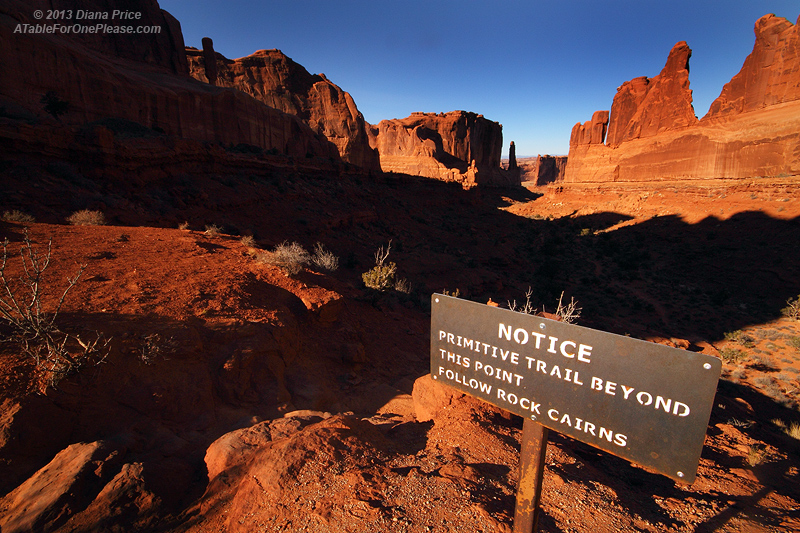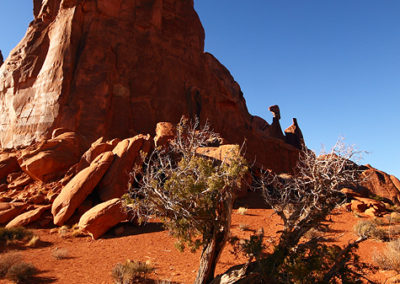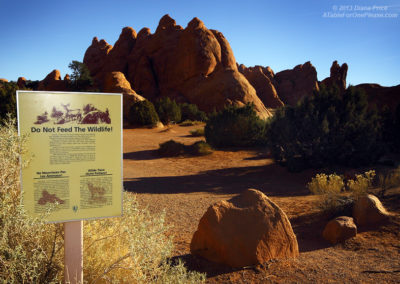“It is not enough to fight for the land; it is even more important to enjoy it. While you can. While it’s still here. So get out there and hunt and fish and mess around with your friends, ramble out yonder and explore the forests, climb the mountains, bag the peaks, run the rivers, breathe deep of that yet sweet and lucid air, sit quietly for a while and contemplate the precious stillness, the lovely, mysterious, and awesome space. Enjoy yourselves, keep your brain in your head and your head firmly attached to the body, the body active and alive, and I promise you this much; I promise you this one sweet victory over our enemies, over those desk-bound men and women with their hearts in a safe deposit box, and their eyes hypnotized by desk calculators. I promise you this; You will outlive the bastards.”
Edward Abbey
Edward Abbey called Arches National Park the “most beautiful place on earth” in the opening to his memoir, “Desert Solitaire,” drawn on his time as a ranger there. Few who have visited Arches or the nearby parks around Moab, Utah, would argue that point. Trails and traditional campsites allow visitors to enjoy this majestic setting, but to fully embrace its rugged beauty, the adventurous leave the beaten path for primitive camping.
Arches National Park
Plan on walking at least a mile to set up primitive camping in Arches National Park; all visitors must make camp at least one mile from any road, designated trail and any named arches on the USGS maps. Keep campsites out of sight of those areas, as well. In addition, further restrictions prohibit camps within 300 feet from of any archaeological sites or non-flowing nonflowing water, and 100 feet from flowing water. The main park road cuts right through the middle of the park, so meeting the requirements provides a bit of a challenge. Permits are required for all primitive camping and may be purchased at the visitor center, To protect the fragile environment in the park, all campers must follow “Leave No Trace” principles to leave the area as they found it. The maximum group size is 10, but smaller groups are strongly encouraged to reduce environmental impact.
Canyonlands Camping
In the nearby Canyonlands National Park, campers need permits for all overnight backcountry trips. You may reserve them in advance, unlike Arches National Park. But like Arches, all primitive campsites must stay outside a one-mile radius of roads, and at least 300 feet from water sources or archaeological and historical sites, with river corridor camping as the only exception to the rule regarding water sources. No wood fires are permitted at primitive campsites except along rivers, and pets are not allowed. Permits expire after seven consecutive days on at any one site.
BLM Lands
The Bureau of Land Management (BLM) operates many primitive campgrounds without water or facilities in the Moab area and charges no fees. Most cannot be reserved in advance. Check the BLM website to find maps and more information about the individual campgrounds. Guests may not stay more than 14 days in any 30-day period. Note that you may share these sites with RVers, who love the free “boondocking” on BLM lands.
Food and Water
You’ll find no drinking water in the backcountry around Moab, save the occasional flow from outside the parks where livestock graze, which needs boiling and purifying to be potable. Even if you do follow those precautions and drink that purified water, don’t expect it to taste good. One way or another, plan for at least one gallon of water daily per person, which person — a gallon weighs eight pounds. If you plan to cook, bring in a camp stove as stove, because few of these areas allow fires. Use extra caution when lighting stoves during high winds and keep any flames away from dry grass, as fires grass. Fires in this arid region can catch and spread quickly.
Leaving No Trace
The old saying goes “Take only photos, leave only footprints.” To practice “leave no trace” camping principles, either bring a portable toilet system or dig a “cat hole” four to six inches deep and at least 300 feet from any water source. Toilet paper and any feminine hygiene products must be packed out, as well. Swimming or washing up directly in pools violates these principles, but you may collect water in a clean container and use it for washing at least 300 feet away, using bio-degradable soap only. An ecological consideration particular to this desert climate involves taking care not to disturb living soil crusts with misplaced footsteps. The crusts, which look black and bumpy or red and smooth, consist of living cyanobacteria, lichen, fungi, algae, algae, and moss. Try to stay in dry washes or on rock as you hike to and from your site to avoid destroying this soil-enriching life form, as well as setting up form. Set up your camp itself on a rock foundation.
Safety
These remote camping areas around Moab give campers dramatic views of towering rock formations and sweeping sunset views, vistas, but can be hazardous to the inexperienced and experienced alike. Know basic topographic map reading map-reading skills and come prepared for whatever temperatures you may face during your visit. The most common safety issues have related to dehydration and careless hiking or climbing, especially on Slickrock and sandstone. The former is easier to climb than descend, and the latter can crumble or and tends to get slippery when wet.
Exercise caution by shaking out and checking clothing, bedding, and shoes for unwanted visitors, such as scorpions, black widows or rattlesnakes; never reach into dark places blindly to avoid bites and stings. Thunderstorms pose a serious threat to backcountry campers and hikers. Do not take refuge under rock overhangs or in caves, but proceed directly to your vehicle. If your hair literally stands on end, quickly remove any metal objects such as pack frames, squat near the ground, and cover your ears. Sudden thunderstorms can turn a dry wash into a raging torrent in a matter of minutes, so avoid setting up camp there.

















